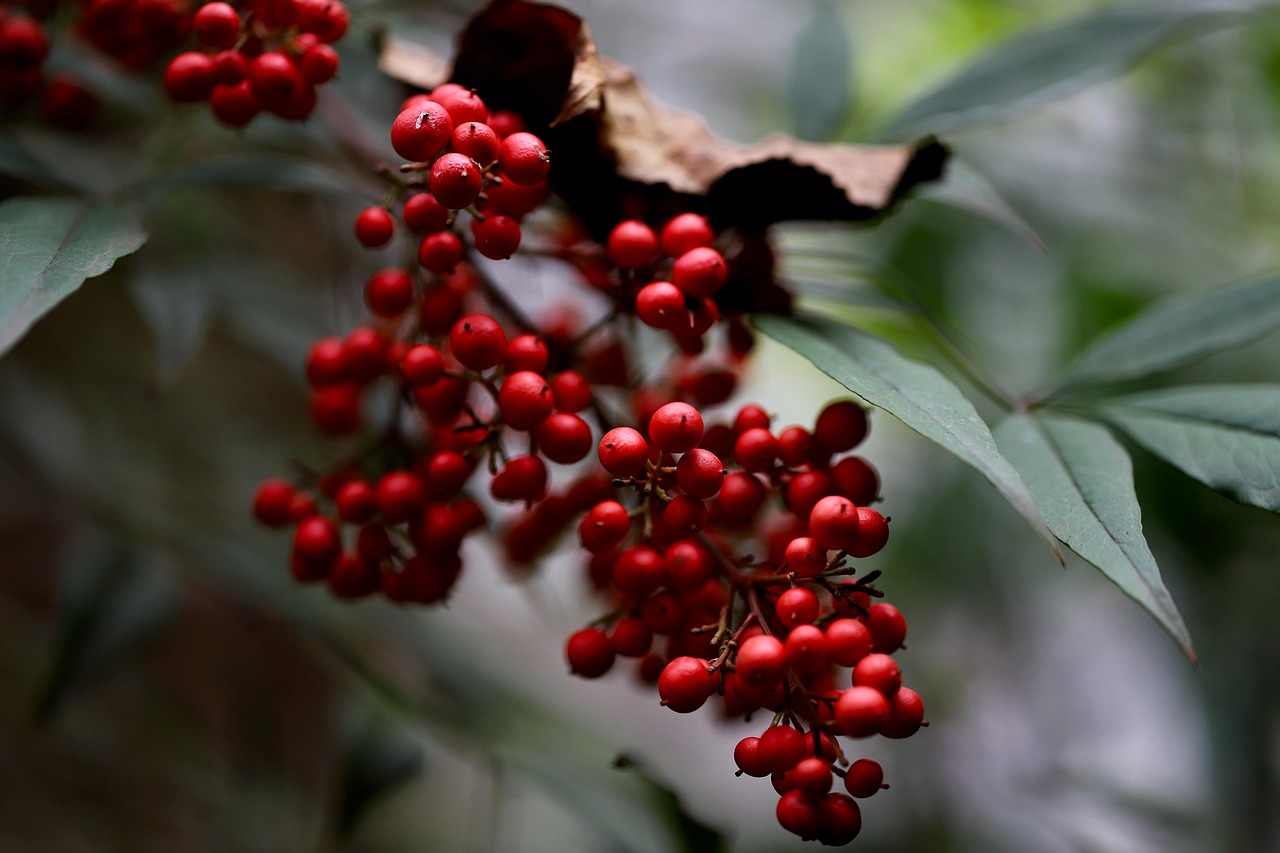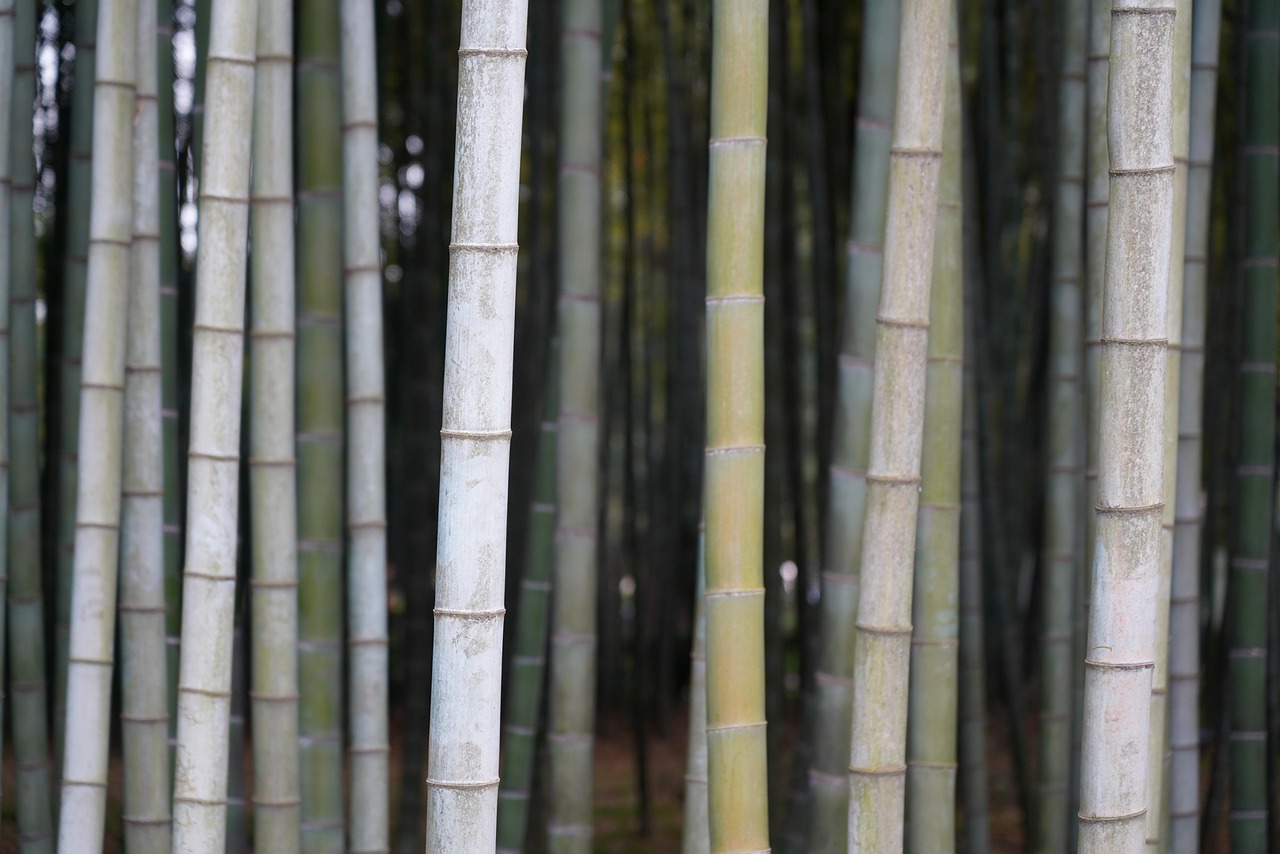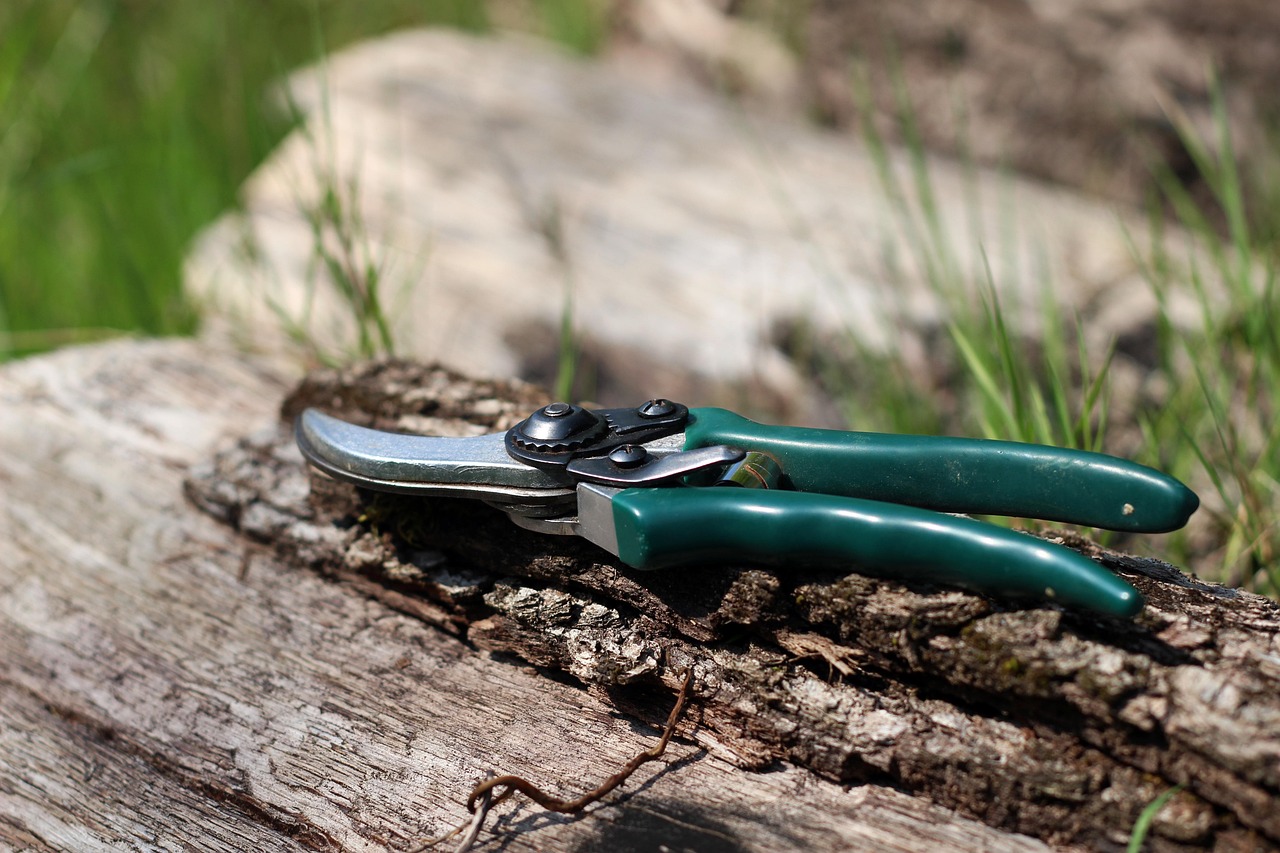Pruning bamboo effectively enhances its density, creating a more robust privacy screen. Regular maintenance encourages healthy growth, removes dead or weak canes, and promotes a fuller, more lush appearance.
Bamboo is a popular choice for creating privacy screens due to its fast growth and dense foliage. It provides an attractive natural barrier, blocking unwanted views while adding beauty to any landscape. However, to maintain its effectiveness and health, proper pruning techniques are essential.

Understanding the growth patterns of bamboo is crucial for effective pruning. Bamboo grows in clumps, with new shoots emerging each spring. If left unpruned, bamboo can become overcrowded and lose its aesthetic appeal. Pruning not only helps maintain its shape but also improves air circulation and light penetration, which are vital for healthy growth.
Benefits of Pruning Bamboo
Regular pruning of bamboo offers several benefits that contribute to its overall health and performance as a privacy screen.
- Increased Density: Pruning encourages the growth of new shoots, leading to a thicker and denser screen.
- Improved Health: Removing dead or damaged canes prevents disease and pest infestations.
- Better Aesthetics: A well-maintained bamboo screen looks more appealing and manicured.
- Enhanced Growth: Pruning stimulates growth by allowing more sunlight and air to reach the interior of the plant.
To achieve these benefits, it’s important to know the right time and techniques for pruning bamboo. Typically, the best time to prune is in late winter or early spring before new growth begins. This timing helps ensure that the plant can recover quickly and grow vigorously during the growing season.

Types of Bamboo
Before pruning, it’s helpful to understand the different types of bamboo, as their growth habits can vary significantly. The two main categories of bamboo are:
- Clumping Bamboo: This type grows in tight clusters and is generally easier to manage. Examples include Fargesia and Bambusa species.
- Running Bamboo: This type spreads rapidly through underground rhizomes. It requires more frequent control to prevent it from invading other areas. Common examples are Phyllostachys and Pleioblastus species.
Pruning Techniques
Effective pruning involves several techniques tailored to the specific type of bamboo you are working with. Following proper methods ensures that your bamboo remains healthy and dense.
1. Thinning
Thinning involves removing some of the older canes to allow for better airflow and sunlight penetration. This technique promotes new growth and prevents overcrowding. Focus on:

- Removing dead or weak canes.
- Selecting older canes for removal, as they may not produce as much foliage.
- Aim for a balance, ensuring that the remaining canes are evenly spaced.
2. Topping
Topping is the process of cutting back the tops of taller canes to encourage bushier growth lower down. This technique is particularly useful for creating a more uniform height across your bamboo screen.
3. Shaping
If you want your bamboo screen to have a specific shape or form, shaping is necessary. Use shears to trim the sides and tops of the plants carefully. This method will help maintain a tidy appearance while enhancing density.
4. Cleaning Up
After pruning, it’s important to clean up the area around your bamboo. Remove all cuttings to prevent pests and diseases from taking hold. Additionally, consider applying mulch around the base of your bamboo plants. This will conserve moisture and suppress weeds, further supporting healthy growth.

Tools Needed for Pruning Bamboo
Having the right tools on hand makes pruning easier and more efficient. Here are some essential tools you’ll need:
| Tool | Description |
|---|---|
| Pruning Shears | Ideal for cutting small canes and shaping plants. |
| Loppers | Useful for larger canes that cannot be cut with shears. |
| Saw | A hand or power saw is needed for thicker canes. |
| Gloves | Protect your hands from sharp edges and thorny species. |
With these tools and techniques in mind, you can effectively prune your bamboo to maintain a dense privacy screen. Regular maintenance will contribute significantly to the health and appearance of your bamboo plants, ensuring that they serve their purpose beautifully for years to come.
Seasonal Considerations for Pruning Bamboo
Timing is a critical factor when it comes to pruning bamboo. Understanding the seasonal growth patterns will help you determine the best time for pruning. Bamboo typically grows in cycles, and knowing these can maximize the effectiveness of your pruning efforts.
Spring Pruning
Spring is often the ideal time for pruning bamboo. As new shoots begin to emerge, it is crucial to focus on:
- Removing any dead or damaged canes from the previous year.
- Thinning older canes to promote new growth.
- Shaping the bamboo for an aesthetically pleasing appearance.
This timing allows bamboo to recover quickly and take advantage of the growing season ahead. By removing distractions early, you can help encourage healthy and vigorous growth.
Summer Maintenance
During the summer, bamboo is actively growing. While heavy pruning is not recommended at this time, some light maintenance can be beneficial. Consider the following:
- Monitor for pests or diseases and remove affected canes promptly.
- Trim any overly vigorous shoots that may disrupt the desired shape.
- Water regularly to keep plants healthy and thriving.
Light maintenance during this period helps ensure that your bamboo remains healthy without stressing the plant.
Autumn Cleanup
As autumn approaches and growth slows, it is important to prepare your bamboo for winter. Autumn cleanup focuses on:
- Removing fallen leaves and debris that can harbor pests.
- Cutting back any remaining dead or weak canes.
- Applying mulch around the base to protect roots from frost.
This preparation helps protect your bamboo during colder months and sets the stage for a successful spring growth cycle.
Winter Preparations
While winter is generally a dormant period for bamboo, there are still tasks you can undertake. Focus on:
- Avoiding heavy pruning as the plant is in dormancy.
- Inspecting your bamboo for any signs of damage or disease.
- Planning your pruning strategy for the upcoming spring.
Taking these precautions ensures that your bamboo remains in good condition during its dormant phase.
Common Mistakes to Avoid When Pruning Bamboo
Pruning bamboo can be straightforward, but several common mistakes can hinder growth and damage plants. Avoid these pitfalls to ensure a thriving privacy screen.
- Neglecting Dead or Damaged Canes: Failing to remove sick or dead canes can lead to pest infestations and diseases affecting healthy plants.
- Pruning at the Wrong Time: Cutting back too late in the season can stress the plant, resulting in stunted growth.
- Overpruning: Removing too many canes can lead to an unsightly appearance and reduced density.
- Ineffective Tools: Using dull tools makes pruning harder and can damage the plant. Always use sharp, clean tools for best results.
Avoiding these mistakes will help maintain not only the health of your bamboo but also its visual appeal as a privacy screen.
Bamboo Varieties and Their Pruning Needs
Different bamboo varieties have unique characteristics that influence their pruning requirements. Understanding these differences can help you tailor your approach for optimal results.
Fargesia Varieties
Fargesia species, often referred to as clumping bamboo, are known for their dense growth and suitability for colder climates. Pruning needs include:
- Light thinning of older canes every few years.
- Avoiding heavy pruning as it may reduce density and alter the natural form.
Phyllostachys Varieties
Phyllostachys species are running bamboos that spread aggressively. Their pruning requirements involve:
- Frequent control of spreading rhizomes through cutting back undesirable shoots.
- Regular thinning to prevent overcrowding and maintain density.
Bambusa Varieties
Bambusa species are tropical bamboos that often require more care. Key pruning tips include:
- Thinning out weak canes to promote healthy ones.
- Topping taller shoots to encourage bushier growth below.
By understanding the specific needs of each variety, you can effectively maintain a dense privacy screen that meets your aesthetic desires while ensuring health and vitality in your bamboo plants.
Pruning Techniques for Specific Bamboo Heights
Different bamboo varieties can grow to various heights, and the approach to pruning can change based on the desired height of your privacy screen. Understanding how to manage the growth of tall versus short bamboo is essential for maintaining a beautiful and functional barrier.
Managing Tall Bamboo
Tall bamboo species, such as Phyllostachys edulis (Moso bamboo), can reach impressive heights. While these plants provide excellent privacy, they may require specific pruning techniques to control their height and shape. Here are some effective methods:
- Topping: Cut back the tallest canes to your desired height in early spring. This encourages lower growth and prevents the bamboo from becoming too tall.
- Selective Thinning: Remove some of the older canes at the base to allow more sunlight to reach the lower shoots, promoting denser growth.
- Regular Maintenance: Monitor growth throughout the season. Lightly trim any canes that exceed the desired height as needed.
Maintaining Shorter Bamboo
Shorter bamboo varieties, like Fargesia murielae, provide a more compact privacy screen. Pruning for these species focuses on maintaining their bushy appearance and health:
- Light Thinning: Every few years, thin out some of the older canes to maintain density without sacrificing the overall look.
- Shaping: Regularly trim back any canes that grow out of bounds to keep a tidy appearance.
- Encouraging New Growth: Prune back to ground level if necessary to stimulate new shoots if the plant becomes sparse.
The Role of Seasonal Fertilization in Pruning
Fertilization works hand-in-hand with pruning. Proper nutrients support healthy growth, especially after a heavy pruning session. Knowing when and how to fertilize can amplify the results of your pruning efforts.
Types of Fertilizers
When selecting fertilizers for bamboo, consider these options:
- Slow-Release Fertilizers: These provide a steady supply of nutrients over time, making them ideal for long-term growth.
- Organic Options: Compost or well-rotted manure enriches the soil naturally while improving moisture retention.
- Liquid Fertilizers: These are quickly absorbed and useful for immediate nutrient boosts, especially after pruning.
Application Timing
Fertilization is most effective when applied at strategic times throughout the year:
- Spring: Apply fertilizer after pruning to support new growth as it emerges.
- Mid-Summer: A second round of fertilization can help sustain growth during the peak growing season.
- Fall: If using organic compost, apply it in early fall to prepare the plants for winter.
Pest and Disease Management During Pruning
Pruning can expose bamboo to potential pests and diseases. Being proactive about management is key to maintaining a healthy privacy screen.
Common Pests of Bamboo
Bamboo can be susceptible to various pests, including:
- Bamboo Mites: These tiny pests can weaken plants by feeding on leaves. Regular inspections during pruning can help catch infestations early.
- Aphids: These small insects suck sap from young shoots. They can be controlled with insecticidal soap or neem oil.
- Bamboo Borers: These wood-boring insects can damage canes. Signs include holes in the stems and powdery residue.
Disease Prevention
Keeping an eye out for diseases is essential for healthy bamboo. Common diseases include:
- Bamboo Blight: This fungal disease can cause yellowing leaves. Ensure proper air circulation through regular thinning during pruning.
- Root Rot: Overwatering or poor drainage can lead to root rot. Monitor soil moisture and adjust watering practices accordingly.
If you notice signs of disease during pruning, it is essential to isolate affected plants. Remove infected canes promptly and treat with appropriate fungicides if necessary.
Creating a Maintenance Schedule
A proactive maintenance schedule helps ensure that your bamboo remains healthy and dense throughout the year. Here’s a recommended schedule to follow:
| Month | Task |
|---|---|
| January | Plan pruning strategy and inspect for winter damage. |
| February | Prepare tools; check fertilizer supplies and soil condition. |
| March | Begin spring pruning; apply fertilizer post-pruning. |
| June | Monitor growth; lightly trim any taller canes as needed. |
| September | Fall cleanup; remove debris and dead canes; apply compost. |
| November | Inspect for pests and prepare for winter care. |
This structured schedule allows you to focus your efforts where they are most needed while ensuring that your bamboo privacy screen thrives throughout the seasons.
Additional Tips for Successful Bamboo Pruning
In addition to the previously discussed techniques and schedules, there are several more tips that can enhance your bamboo pruning efforts. These include recognizing the specific growth habits of your bamboo, understanding the environmental factors that affect growth, and maintaining the overall health of your bamboo plants.
Understanding Growth Patterns
Each bamboo variety grows differently, and understanding these patterns can help you make informed decisions about pruning:
- Growth Rate: Fast-growing varieties may need more frequent pruning than slower-growing ones. Monitoring their growth can help you stay on top of necessary maintenance.
- Shooting Season: Most bamboo species produce new shoots in spring. Pruning after this period can help you shape the plant while taking advantage of its natural growth cycle.
- Health Monitoring: Regularly inspect your bamboo for signs of stress, such as yellowing leaves or stunted growth. This may indicate a need for adjustments in care or pruning strategies.
Environmental Considerations
The environment in which your bamboo grows also plays a significant role in its health and growth. Keep these factors in mind:
- Sunlight: Ensure your bamboo receives adequate sunlight. If some canes are shaded, consider pruning them to allow light to penetrate more evenly.
- Soil Quality: Healthy soil contributes to vigorous growth. Periodically check soil pH and nutrient levels to ensure optimal conditions.
- Watering Practices: Bamboo thrives with consistent moisture. Avoid overwatering, as this can lead to root rot, especially after pruning.
Safety Precautions
When pruning bamboo, safety should always be a priority. Here are some essential safety tips to follow:
- Wear Protective Gear: Use gloves to protect your hands from cuts and thorns. Safety goggles are advisable when using power tools.
- Use Sharp Tools: Always work with clean, sharp tools to make clean cuts and reduce the risk of injury.
- Be Mindful of Your Surroundings: Ensure the area is free from obstacles and be cautious of falling debris during pruning.
Final Thoughts
Pruning bamboo for dense privacy screens is an essential gardening practice that enhances both the aesthetic appeal and functionality of your landscape. By understanding the specific needs of different bamboo varieties, employing effective pruning techniques, and maintaining a structured care schedule, you can create a thriving green barrier that offers privacy while remaining healthy and beautiful.
The journey of cultivating a bamboo privacy screen involves patience and consistent care. As you apply the techniques and strategies outlined in this article, remember that each variety may respond differently to your efforts. Adaptability is key; observe how your plants react and adjust your methods as needed.
Ultimately, with diligence in pruning, fertilization, and pest management, you will enjoy the many benefits that bamboo provides. From its rapid growth to its striking appearance, bamboo serves as an excellent choice for creating serene outdoor spaces that shield you from prying eyes while contributing positively to the environment.
As you embark on or continue your bamboo gardening journey, take pride in the lush privacy screens that you cultivate. With proper care and attention, your bamboo will flourish for years to come, offering both beauty and functionality in your landscape design.
